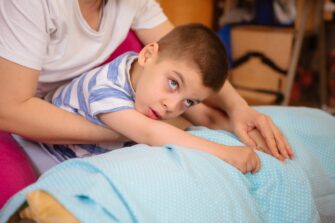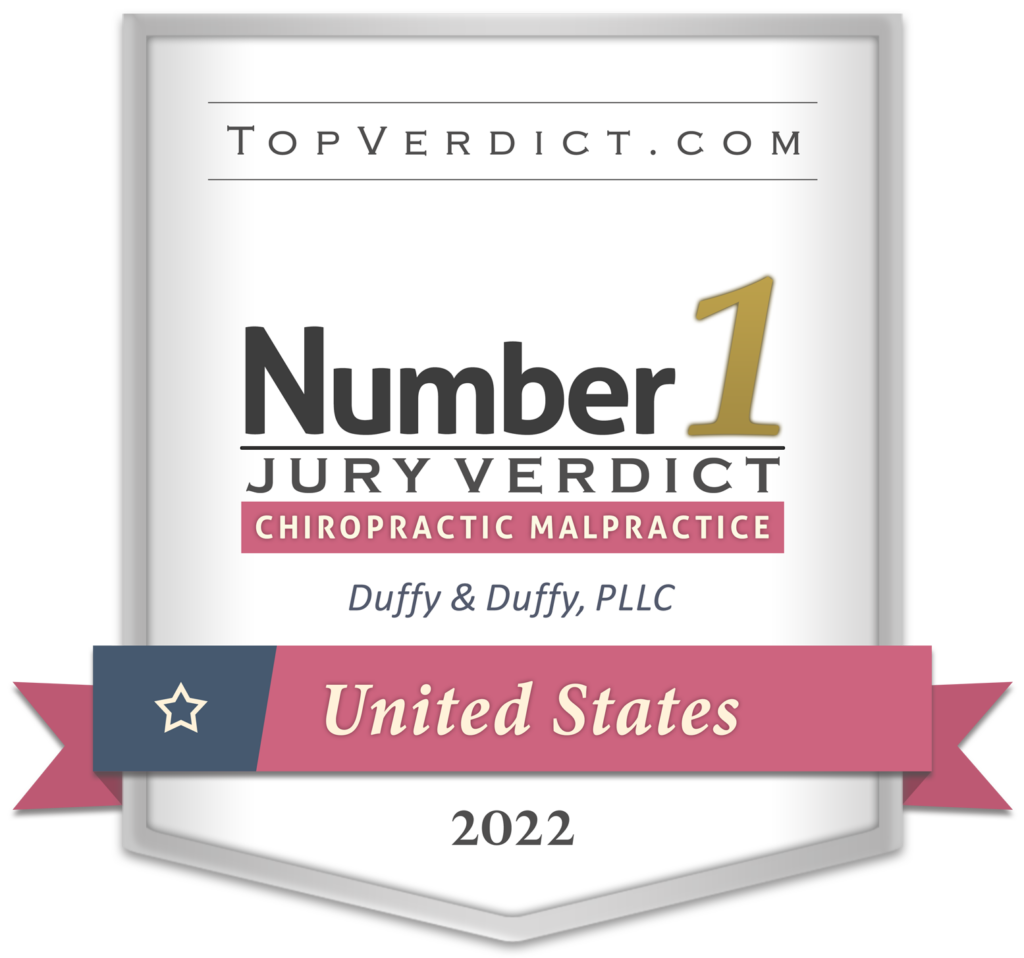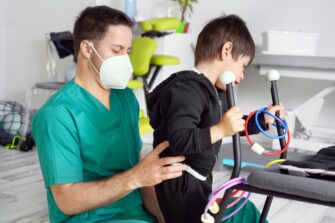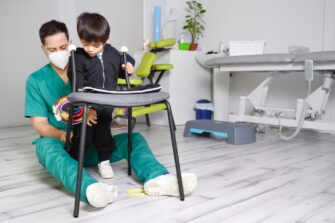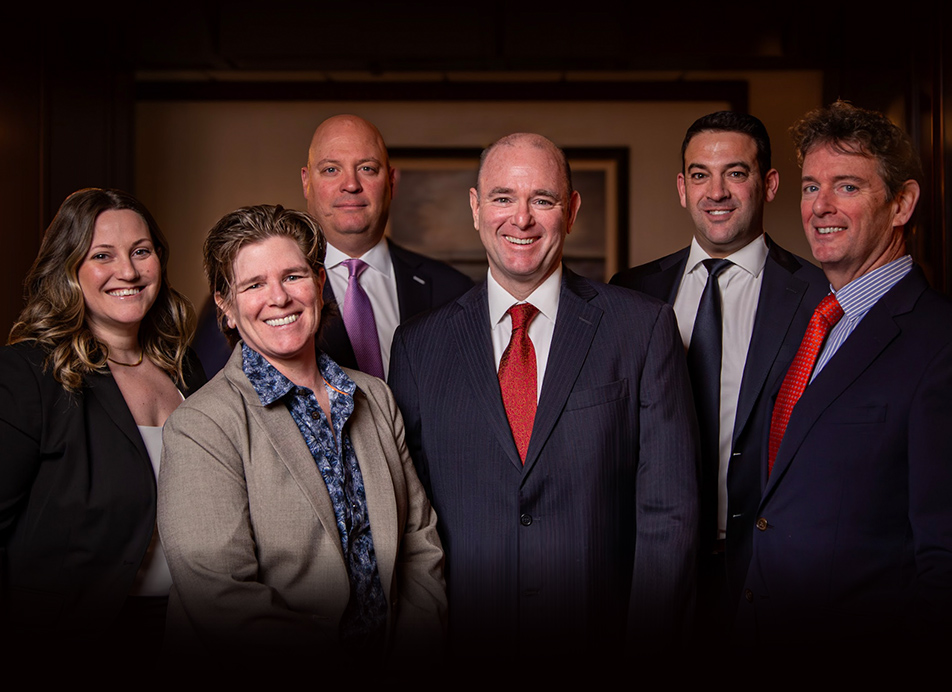Table of Contents
- 1 Cerebral Palsy: How Does It Affect The Development Of Your Child?
- 2 What Is Cerebral Palsy (CP)?
- 3 Types Of Cerebral Palsy
- 4 What Are The Causes Of Cerebral Palsy?
- 5 Diagnosis Of Cerebral Palsy
- 6 Let our skilled injury lawyers help.
- 7 Problems Caused By Cerebral Palsy
- 8 Cerebral Palsy And How It Affects The Development
- 9 Sections Of Developmental Delays In Kids With CP
- 10 Types Of Milestones
- 11 Treatment Of Cerebral Palsy
- 12 Evaluation Of Developmental Issues
- 13 Remember To Visit A CP Specialist
Cerebral Palsy: How Does It Affect The Development Of Your Child?
A kid’s development can be affected differently depending on the location, severity, and level of the brain damage that may result in cerebral palsy. Usually, the developmental sections affected by cerebral palsy involve fine motor coordination and gross motor movement. Birth traumas causing cerebral palsy might also cause language issues, sensory skill disturbance, poor emotional development, and social development issues.
What Is Cerebral Palsy (CP)?
Cerebral palsy is an issue affecting muscle tone, motor skills, and movement. It creates hurdles in the body’s capabilities of moving in a purposeful and coordinated way. It can also affect other body movements that include muscles and motor skills such as the bladder, breathing, talking, eating, and bowel control.
Cerebral palsy is caused by brain damage, which occurs pre- or post-child’s birth. However, it generally manifests itself in the first 3 to 5 years of the kid’s life. Brain damage can also lead to multiple other problems such as hearing, sight, and learning issues.
Types Of Cerebral Palsy
There are three types of cerebral palsies:
- Spastic cerebral palsy: the type of CP that causes movement difficulties and stiffness in muscles.
- Dyskinetic (athetoid) cerebral palsy: it is cerebral palsy, which causes uncontrolled movement.
- Ataxic cerebral palsy is the type that causes depth perception and balance issues.
There is no treatment for cerebral palsy; however, the quality of life can be improved for the child in the following ways:
- Therapy involving surgery.
- Treatment such as occupational therapy, physical therapy, and speech therapy.
- Special instruments for helping the children get around to communicate with other people.
Adopting the measures mentioned above can help you control cerebral palsy and ensure that it stays the same, preventing it from getting worse over time.
What Are The Causes Of Cerebral Palsy?
Cerebral palsy causes are not always known. However, in certain cases, it occurs when a baby’s brain is developing, i.e., before birth or during early childhood. They may occur due to:
- Inflammation while being pregnant
- Stroke in the womb or after delivery
- Untreated jaundice. Jaundice in the whites of eyes and yellowing of the skin
- Genetic issues
- Medical issues in the mother while she is pregnant.
However, there are sporadic cases where cerebral palsy occurs when something wrong happens during the time of delivery. Babies born before the delivery date, i.e., premature babies and the twins and triplets, have more significant risks of having cerebral palsy than other babies.
Brain trauma in early childhood or infancy might also lead to cerebral palsy. For instance, a toddler or a baby may suffer trauma from:
- Lead poisoning
- Meningitis
- Less blood flow to the brain
- Shaken baby syndrome
- Car accident
Diagnosis Of Cerebral Palsy
Babies born before their due date or have health issues put them at a greater risk for cerebral palsy. Such babies are looked after for the symptoms of CP. Doctors keep a check on:
- Delay in development such as not wanting toys by four months or not sitting up by seven months.
- Issues with motor skills such as being unable to walk, crawl and move legs and arms like other kids.
- Bumbling movements.
- Muscle tone that is either too loose or too tight.
- Infant reflexes such as hands in fists or palmar grasp, which stays beyond the age where it is usually gone.
Problems Caused By Cerebral Palsy
There is a wide range of cognitive and physical disabilities when we talk about cerebral palsy; (mental means learning and understanding). However, it depends on the level of brain trauma. Many kids face issues with their education and movement, while others may not.
For instance, the trauma might be partial, affecting the brain’s part controlling the walking strength. It might involve a more significant area and affect talking and walking.
Brain trauma causing cerebral palsy can also affect other brain functions and might lead to issues like:
- Blindness and visual impairment
- Loss of hearing
- Sucking fluid or food into the lungs also known as food aspiration
- Spitting up, also known as gastroesophageal reflux
- Drooling or speech issues
- Tooth decay
- Sleep issues
- Brittle and weak bones also known as osteoporosis
- Attitude issues
- Learning issues
Speech, seizures, learning, and communication issues are more common between the kids having cerebral palsy. Many have problems that might demand more assistive devices such as wheelchairs or braces and ongoing therapy.
Cerebral Palsy And How It Affects The Development
Every child reaches a different milestone for social, emotional, language, cognitive, and physical development at their pace. Nevertheless, if a child lacks the qualities of an average child, it might signal that there are developmental issues. Keep in mind that the temporary delay in the activity is not CP, but a continuous delay might be.
Due to brain trauma, kids have developmental problems and rapidly fail to meet the respective milestones, leading to a diagnosis of CP.
While CP can affect their balance, posture, efficiency to eat, move, communicate, learn, and sleep, the signs can vary from person to person. For instance, a child might have some weakness in one hand and might have issues performing tasks that need both hands. Such kids might face unpredictable and uncontrolled movements, tight, stiff, weak muscles, shaky tremors, or movements. As for kids who have severe cerebral palsy might face difficulties in breathing, neck and head control, bowel and bladder control, digestive and dental issues, and eating issues.
Sections Of Developmental Delays In Kids With CP
Categories of people suffering from CP those suffering problems in:
- Gross motor expertise helps kids conquer milestones like sitting, crawling, head control and walking.
- Adequate motor expertise, which allows the child to perform multiple tasks like holding a pencil or spoon, picking up little things, manipulating little things, or similar jobs.
- Sensory skills include seeing, hearing, touching, tasting, and smelling.
- Speech and language development issues.
- Behavioral, emotional, and social development.
Types Of Milestones
Following are the milestones a normal child may meet.
Physical Milestone
A child suffering from CP directly experiences challenges in movements and muscle coordination. He or she faces downsides in physical development, which is the first symptom leading towards the diagnosis.
Early milestones like pushing up while lying on the belly or holding up the head (up to two months of age) may be affected. Normally, babies tend to lift their heads by four months, hold or move the toy, bring their hand to their mouth, and rollover unassisted. However, they start rolling over left and right with the passing time and can sit up without any help. They can stand and rebound on their legs.
When they are nine months of age, they can stand with the help of some support, crawl, and sit up without assistance. Lastly, a one-year-old child can pull up to stand and walk with some assistance. However, by 18 months, the child should be walking by himself.
Cognitive Milestone
It is one of the landmarks that not every CP child would have. In some kids, cognitive development might occur on time, while for others, it can be delayed like the physical milestone. A 2-month-old baby tends to respond to people and follow movements with his or her eyes.
They tend to show their boredom with the fuss and other activities. However, a four-month-old child responds to anyone’s affection and reaches out for the toys nearby. They look at other people’s faces and observe their emotions. They react positively to the people they see on a daily basis.
A 6 months old child must observe his surroundings, show curiosity, and take objects towards their mouth. In short, carry out body movement. A 9 months old baby can look out for hidden items and play handy games. Lastly, a year-old child starts exploring things because he can walk and crawl on his own.
Emotional And Social Milestones
Social and emotional milestones are challenging to assess; however, the delays can identify CP’s symptoms or other developmental issues. A 2 months old child smiles back at the people who pass a smile on them.
A 3 months old child will smile more and respond to the people around him. They can copy facial emotions and expressions and get upset when someone does not respond to them.
By six months, the babies start recognizing people around them and respond accordingly.
A 9 months old baby might become clingy and avoid strangers. They also show their interest in the things that they want.
A 1-year-old child must have some favorite humans, fearsome situations, respond accordingly, and be upset when father or mother is not around.
Lastly, by 18 months, the child engages in play by sharing his or her stuff, showing affection, throwing tantrums, searching for things on his own, and playing with his toys on his own.
Communication And Language Milestone
Children having cerebral palsy can have a delay in speech due to cognitive issues or the physical impairment in some of the muscles controlling the speech muscles. They might have some material defects causing problems in hearing and vision. Since the two-month-old baby must gurgle and coo and respond to the coming sounds.
A 4 months old baby babbles and tends to copy other people’s sounds. Their cries vary according to their needs. When they are six months old, they can respond to their name, use diverse sounds to show their needs, and respond to sounds with different sounds. A nine-month-old baby must understand the meaning of words like no and yes, say simple words like baba or mama. In addition, a one-year-old child responds to simple things and shows gestures like greeting someone or goodbyes. They copy other words and change their tone accordingly. Lastly, by 18 months, the child can say multiple words according to his caliber.
Treatment Of Cerebral Palsy
Cerebral palsy is untreatable. However, therapies and resources can help the affected child develop and grow to their potential. After the diagnosis of the condition, the child can be given symptomatic treatment for movement and other conditions needing help like speech, learning, emotional development, hearing, and social development.
- Surgery may help in fixing dislocated scoliosis and hips that are common in kids who have cerebral palsy.
- Leg braces can help in walking.
- Medication can only help children having stiffness and muscle pain. They can take medicine via a pump known as the baclofen pump or mouth.
- The kids’ bone health can also be improved by having healthy diets with higher vitamin D, calcium, and phosphors. These nutrients help in keeping their bones healthy.
- Dietitians, doctors, and speech-language therapists work with parents to ensure that their kid is getting enough of what he or she requires and suggest other changes to their mealtime routines and diet in case it is needed.
Evaluation Of Developmental Issues
As mentioned earlier, the developmental milestones are a source for the assessment of children with CP, leading to a diagnosis of the condition.
Consult a pediatrician if you observe any of the delays in your child’s development to consider some expert evaluation. Because it’s natural for some children to experience developmental delay and catch up later with their fellow kids. In case the delays are persistent, then there may be some serious issues to look after.
Your expert might ask you to consult a speech pathologist expert who checks babies and observes them by engaging them in general tasks and tests. A physical evaluation might showcase the physical development hurdles yet gauge other kinds of issues that demand more keen observation.
However, an adequate assessment might require a developmental expert, a developmental psychologist, and a neurologist. Developmental problems are core elements of CP; however, precautionary measures can help. Working with education experts, physical specialists, psychologists, and other multidisciplinary experts can improve your kid’s development. It might also help your child in catching up with other kids.
Remember To Visit A CP Specialist
Kids suffering from CP might require visiting different medical experts for care. The team might include surgeons, doctors, therapists, nurses, educators, social workers, and psychologists.
However, it is essential to have a CP specialist or a primary care doctor, even if other medical experts are required. A CP specialist will look after your child’s healthcare routine and help you in coordinating medical care with other specialists.
References:
- Shrader M W, Salzrenner M. What Is Cerebral Palsy? Kidshealth. Sept, 2018. https://kidshealth.org/en/parents/cerebral-palsy.html
- Poinsett P M. Cerebral Palsy and Developmental Delays. Cerebral palsy guidance. Nov, 2020. https://www.cerebralpalsyguidance.com/cerebral-palsy/associated-disorders/cerebral-palsy-developmental-delay/
- Anonymous. How Does Cerebral Palsy Affect People. Cerebral Palsy Alliance. https://cerebralpalsy.org.au/our-research/about-cerebral-palsy/what-is-cerebral-palsy/how-cerebral-palsy-affects-people/
- Anonymous. How Does Cerebral Palsy Impact A Child’s Development? ABC law Centers. https://www.abclawcenters.com/frequently-asked-questions/cerebral-palsy-developmental-categories/
How Can We Help?
Please complete the form below and a member of our team will get in touch with you as soon as possible.


